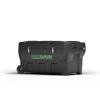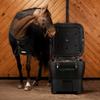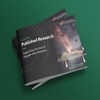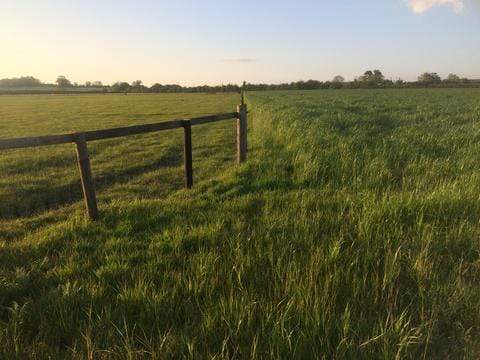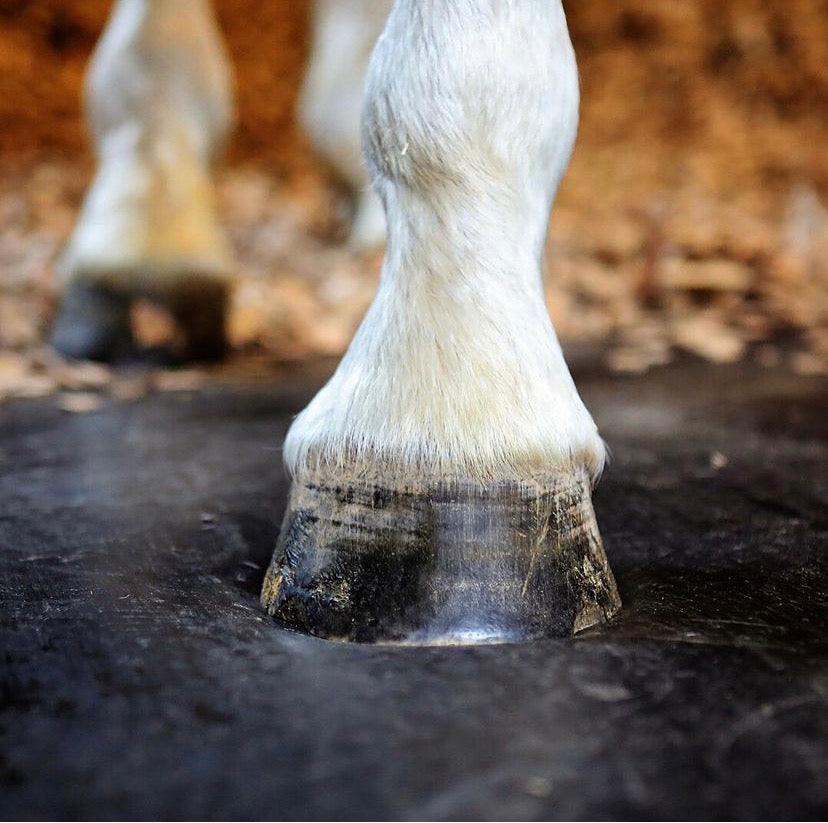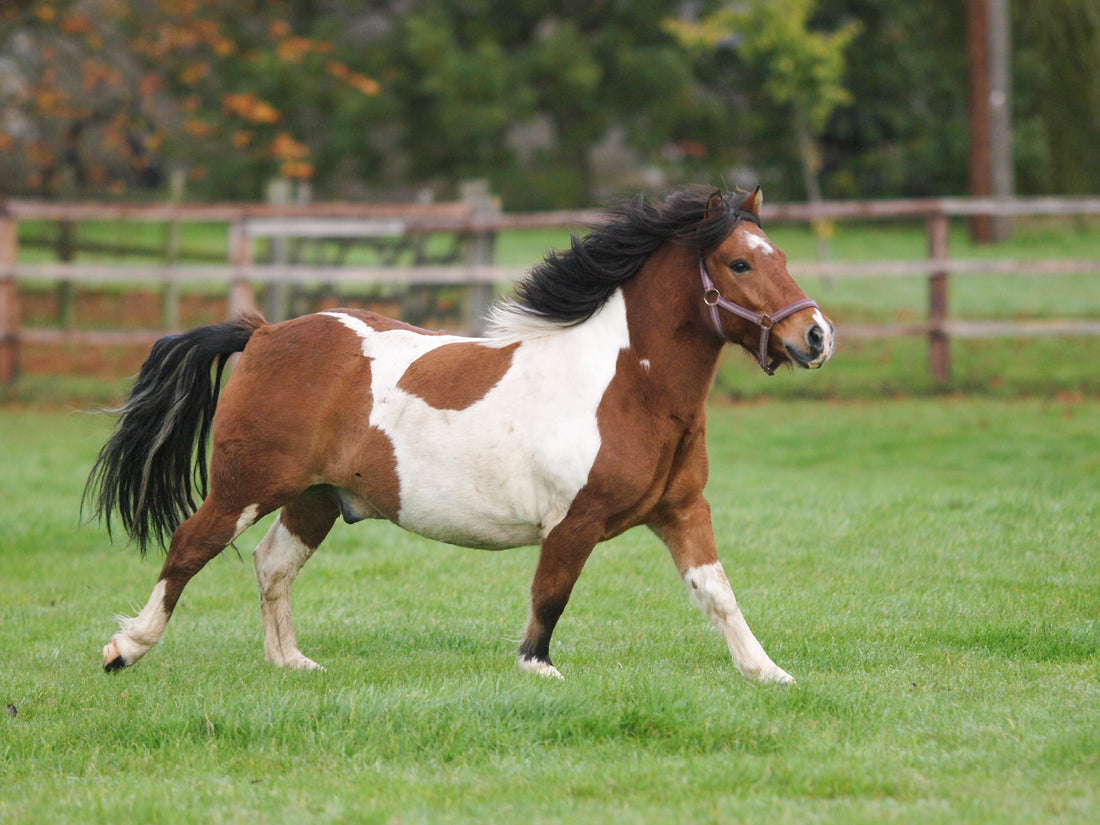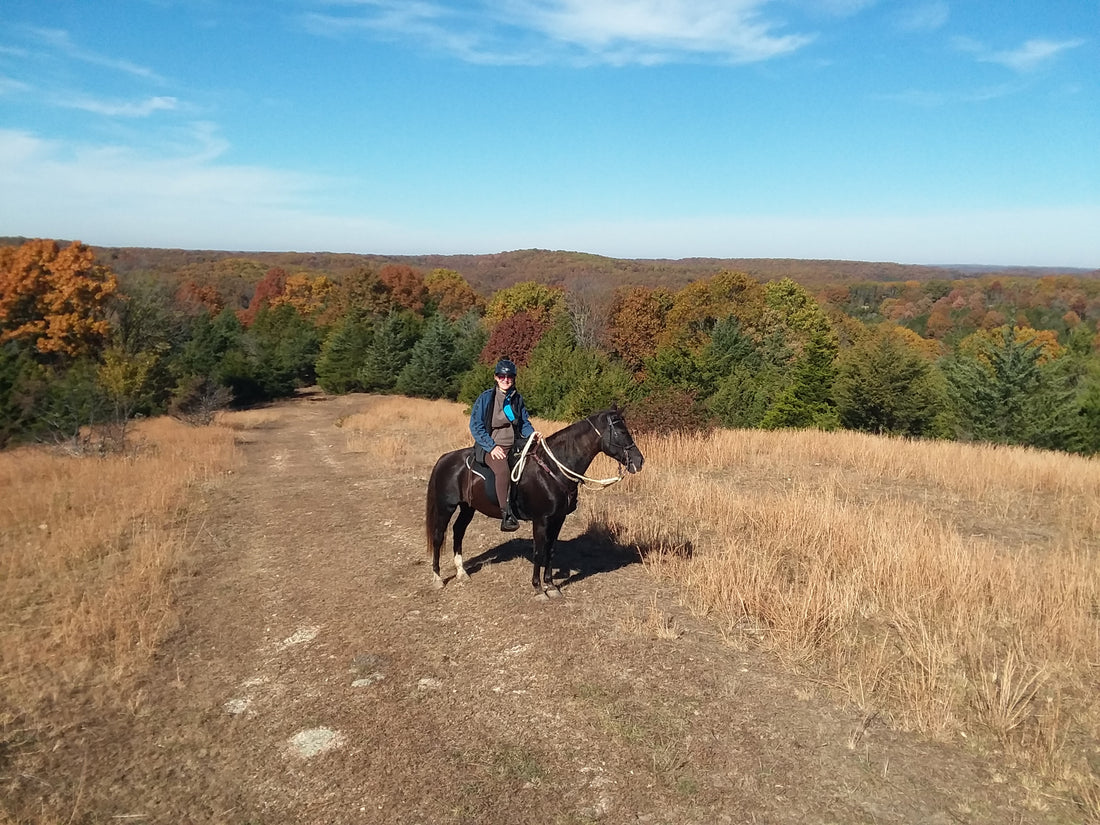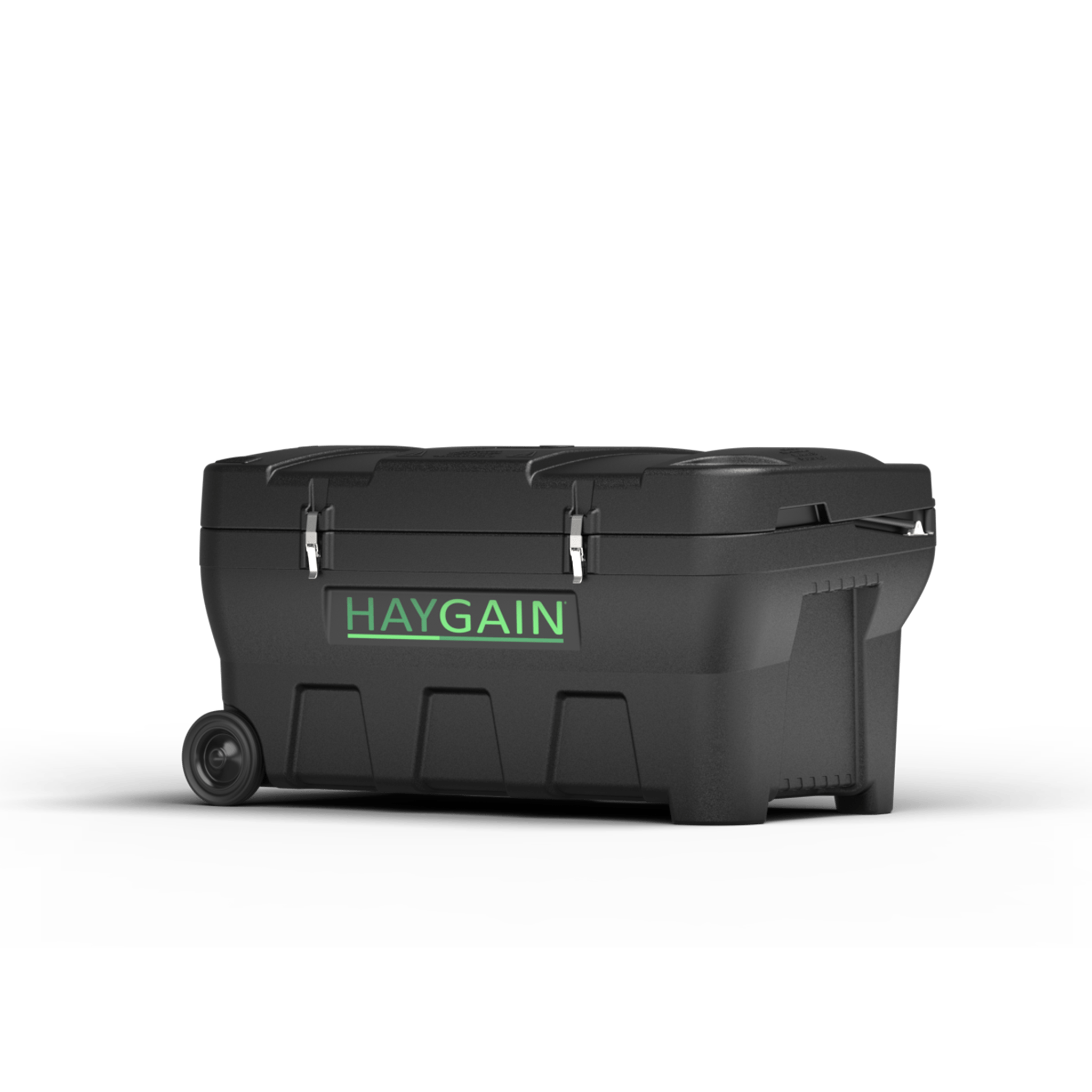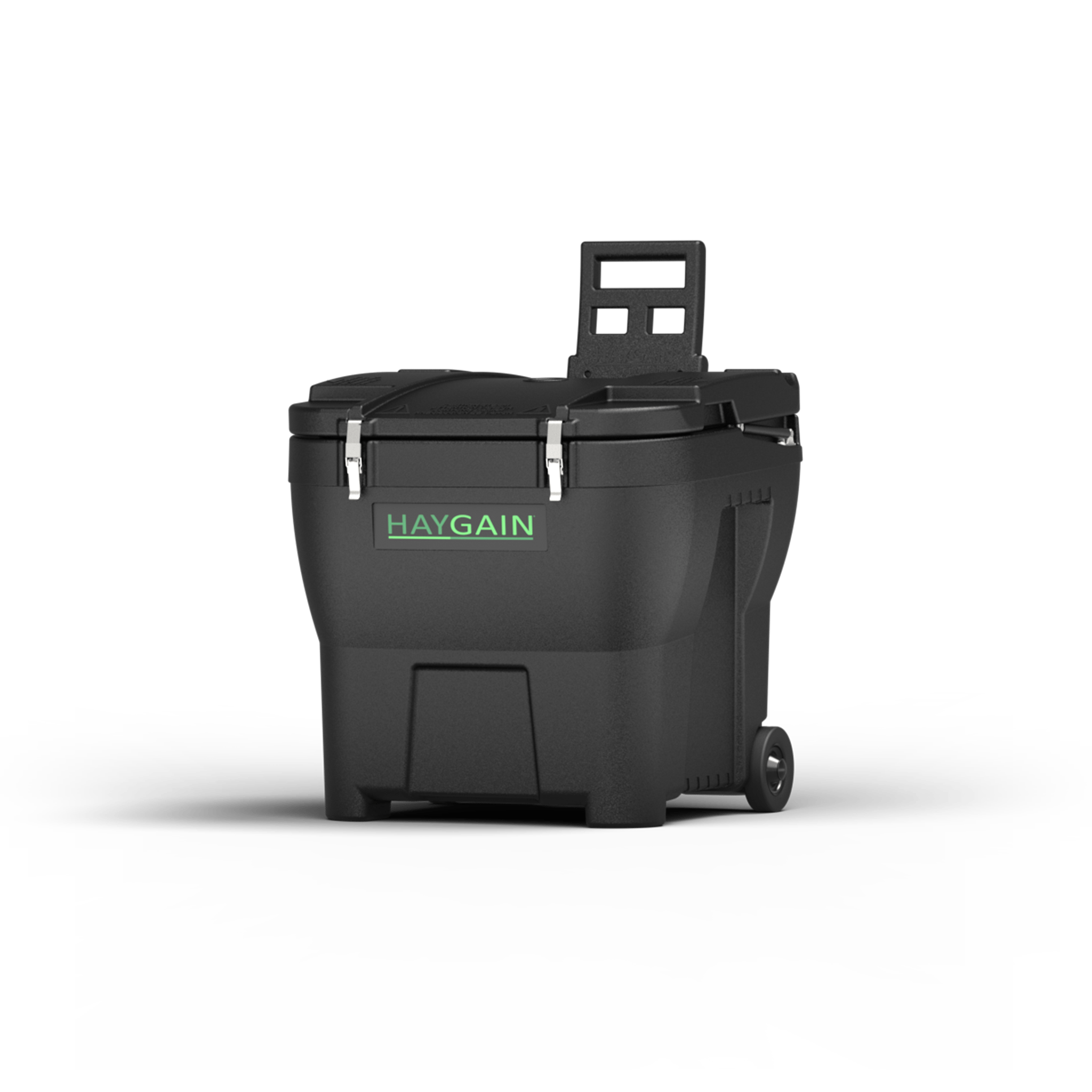Written by: Sharon Smith MSc SEBC(Reg.) IEng ACIWEM BSc(Hons)
Summer is here (at long last!) and we can almost watch the late-spring grass grow taller before our very eyes. Pasture can be the cheapest and most environmentally-friendly form of feed, but we horse owners can’t, and  shouldn’t, manage it like livestock farmers. Cattle and sheep are often single-breed, and of similar age. Many breeds of horses, of all ages, sizes, backgrounds and needs, often share the same field. Cattle and sheep can’t physically graze down to soil level as horses can, and they have to spend hours a day motionless to regurgitate and chew cud. Horses only chew something once; moving on to the next plant after just one bite.
shouldn’t, manage it like livestock farmers. Cattle and sheep are often single-breed, and of similar age. Many breeds of horses, of all ages, sizes, backgrounds and needs, often share the same field. Cattle and sheep can’t physically graze down to soil level as horses can, and they have to spend hours a day motionless to regurgitate and chew cud. Horses only chew something once; moving on to the next plant after just one bite.
Horse appetite seems to be satisfied by dry matter intake (bulk), rather than how many calories they eat.
So, the stages of grass growth are definitely worth the effort to understand, whether you have the horses at livery or on your own property. 1) Grass needs 3 things in order to grow: light, warmth and nutrients (including water).
2) Leaves (which are sweet, soft and don’t offer much ‘chew’ to a horse) turn daylight in soluble carbohydrate (simple sugars) through a process called photosynthesis. Photosynthesis stops at sunset each day, but growth continues overnight (if it’s warm and damp enough) using up the previous day’s sugar store.
3) The soluble carbs are converted into structural carbohydrate – growing larger leaves firstly, which are low in fibre, then deeper roots and a flower stem. Grass is most nutritious (energy, protein, fibre, vitamins, minerals) to animals while growing the stem.
4) Once the stem reaches the right height it buds. Protein levels decline sharply. This is why silage is an early-cut, just before the flowering bud forms, to capture the high protein for meat and milk when the cut grass still has the whole summer to regrow for grazing. In an uncut/ungrazed plant, however, photosynthesis continues and sugars form starch in the developing seed/grain, just like in oats or wheat grain.
5) The grass sheds its seed. Seeds will use starch as energy for germination and first leaf growth. What remains of the parent plant is now low in starch and protein. The plant will start to die back, leaving behind the structure. During this process, any photosynthesized sugar from the leaves will now be stored in the base of the plant, to sprout again in spring. Alternatively, grass that has set seed can be cut for hay.
6) The soluble carbohydrate content of cut hay depends more on the prior weather, cutting, drying and storage conditions, than the species of plant. If the weather is still warm and soil moisture is sufficient, a second growth may extend the grazing season. But in a dry midsummer, or frosty autumn nights, any re-growth will be limited.
Horses are often kept on over-grazed pasture to below 2cm (1”) sward height.

Farmers try to graze livestock in longer grass. Through grazing and cutting, they

Deep-rooted, tall, mature grass and plants help with drainage, aeration, and soil stabilisation – reducing erosion. A deep root system in ‘living soil’ draws more minerals up into the plant above ground to be eaten. Healthy soil makes nutritionally healthy animals. However, remember that the leaves will still be producing sugar during the long days of late summer. The horse may satisfy their appetite for fibre on mature summer pasture, but are still likely to eat too many calories with that fibre when days are long and sunny, and become fat.
So are we doomed to always struggle with our horse’s weight? No. Natives

If you have the choice, rather than turn out in a small area of extremely short,

Cross-grazing, allowing cattle or sheep to graze before horses, is an option for large fields and few horses. Alternatively, strip-graze pasture using temporary fencing. Move only a couple of stakes of electric fence up into mature grass twice a day, according to what your horses need, and closely monitor their weight. Remember to move up a back fence to allow the grazed pasture to recover.
Whichever pasture setup you decide to use, leave unfertilised, ‘set aside’ margins, 5-10m wide, around grazing areas. Herbs and grasses in the margins will over-seed the grazed areas and maintain diversity, for free. UK pasture tends to lack copper, zinc and selenium. Organic livestock farmers sew chicory, which cannot withstand over-grazing but is deep-rooted and high in minerals - especially copper and zinc [3]. Plantains can also contribute higher levels of copper and selenium than grass.
To take this approach further, I believe we are on the cusp of a revolution in how

In summary, good pasture management includes poo-picking, worm counts to minimise chemicals, and ragwort/weed removal. But also treat your soil and pasture as the incredible resource it is for horses and the environment… whether you are producing hay to steam, or aiming for healthy grazing.
References
[1] Harrison, R., & Murray, J. M. D. (2016). A preliminary study of grazing intakes of ponies with and without a history of laminitis. Livestock Science, 186, 2-5.
[2] Moore-Colyer, M. J., Taylor, J. L., & James, R. (2016). The effect of steaming and soaking on the respirable particle, bacteria, mould, and nutrient content in hay for horses. Journal of Equine Veterinary Science, 39, 62-68.
[3] Nwafor, I. C., Shale, K., & Achilonu, M. C. (2017). Chemical composition and nutritive benefits of chicory (Cichorium intybus) as an ideal complementary and/or alternative livestock feed supplement. The Scientific World Journal, 2017.
[4] McAdam, J. H., Short, I. J., & Hoppe, G. M. (2006, June). Opportunities for silvopastoral systems in Ireland. In Proceedings of an IUFRO 3.08 Conference, Galway Ireland, UK.


